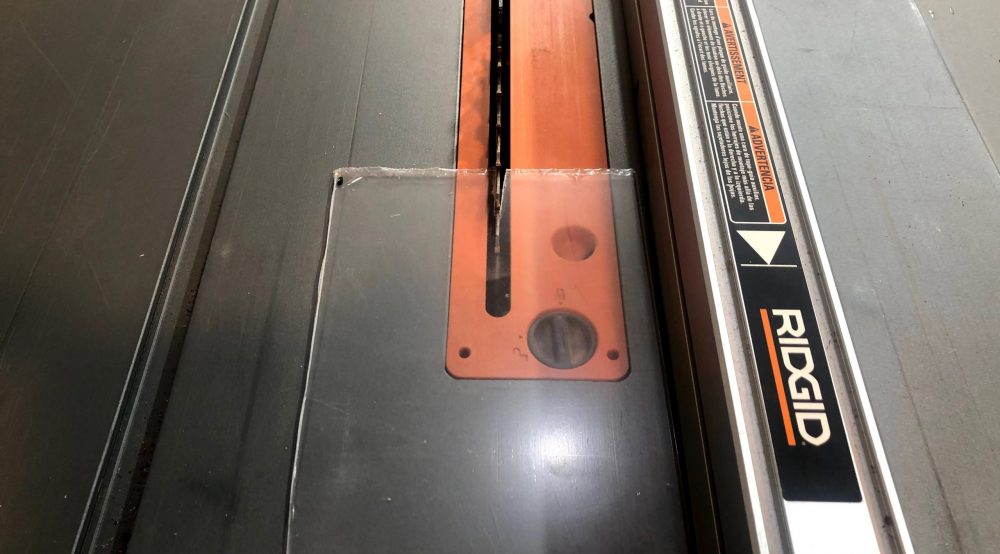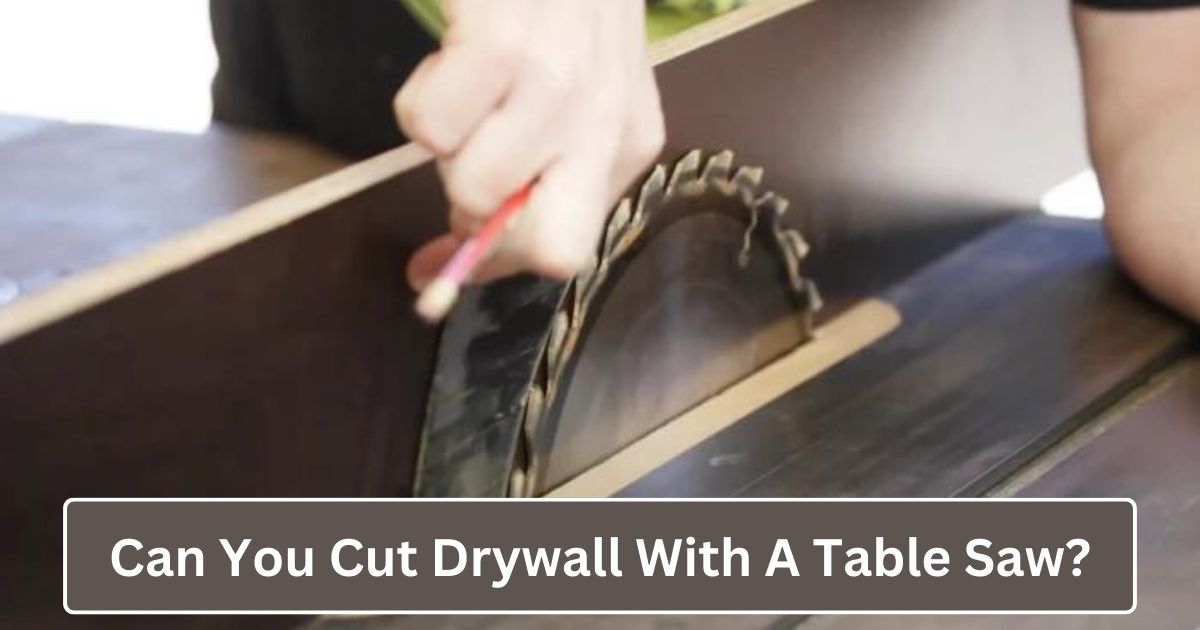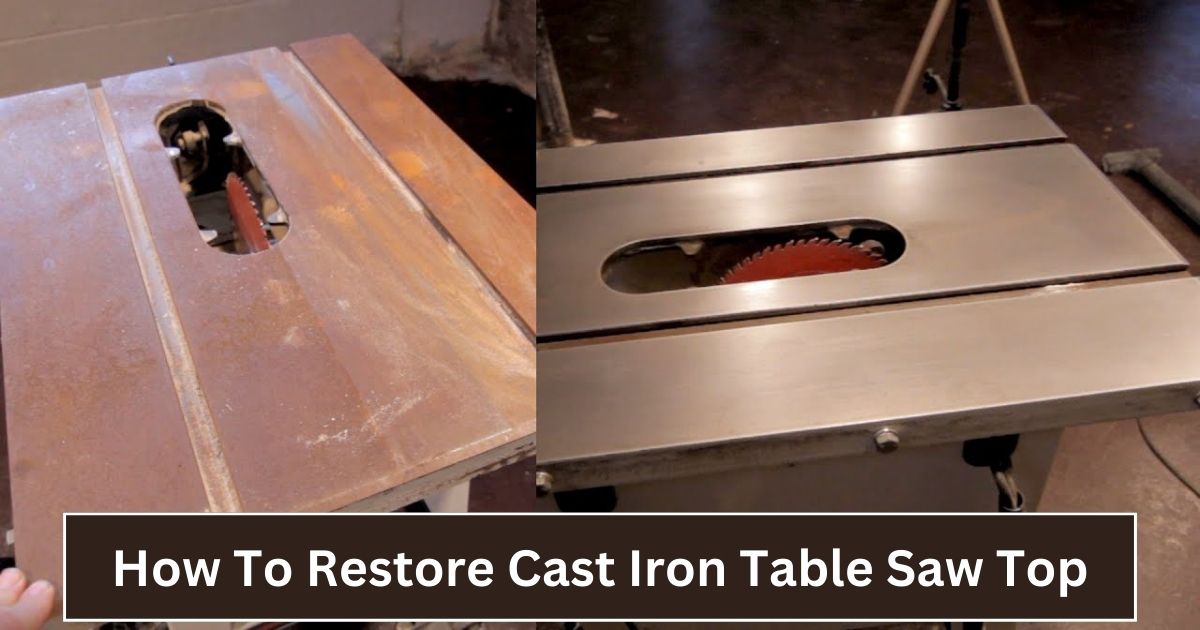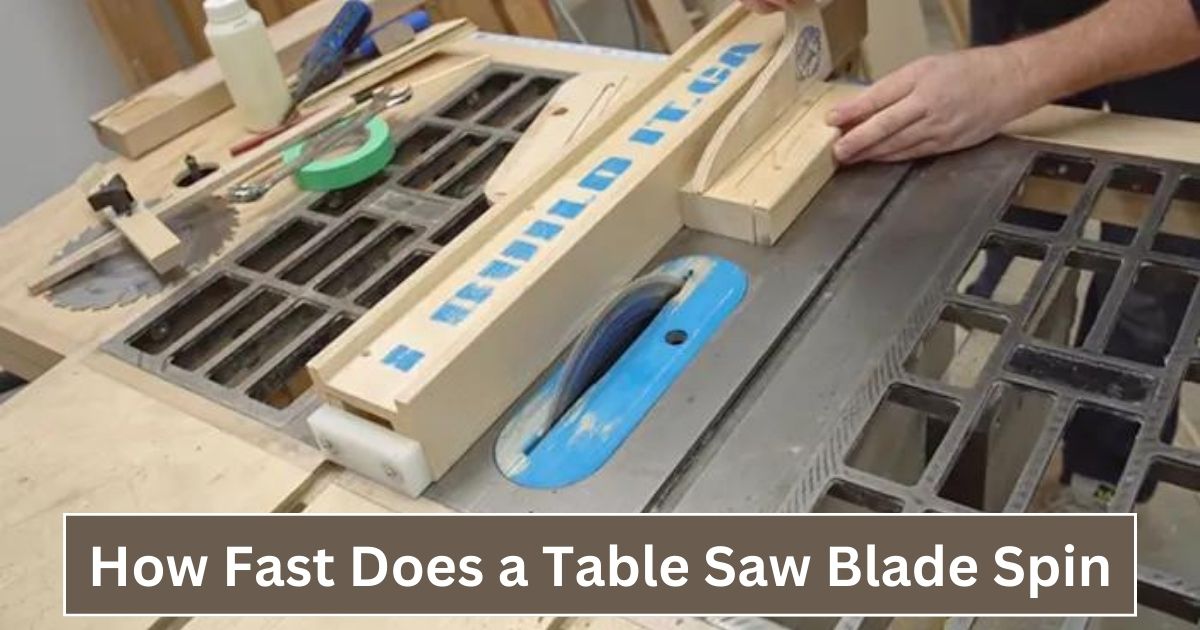Plexiglass and other types of acrylic sheeting are cheap alternatives to glass for many home projects, but it can be hard to find a good way to cut them down. When you cut into Plexiglas, it tends to chip and break.
So, can you cut plexiglass with a table saw? Yes, you can use a table saw to cut plexiglass and other types of acrylic as long as you use a saw blade made of plastic and the right technique.
A table saw is one of the easiest ways to cut through a sheet of plexiglass or other acrylic material, but it does need to be used in a certain way. Read on to find out what tools and techniques you need to cut plexiglass and how you should do it.
Can You Cut Plexiglass With a Table Saw?
The Short Answer yes, you can cut plexiglass with a table saw.
Things You Need to Use a Table Saw to Cut Plexiglass:
Using a table saw to cut plexiglass requires a few extra tools that you wouldn’t need to cut wood. The most important of these is a special blade that can cut through the plastic.
Is it plastic? Not all acrylic sheets are the same, and not all of them can be cut with a table saw without melting a lot.
Acrylic sheets come in two types:
- Acrylic casting
- Acrylic extrusion
Most people think of cast acrylic sheets when they hear the word “plexiglass.” They are tough and, as long as the right blade is used, can usually be cut with a table saw without melting. Most of the time, cast acrylics cost a lot more than others.
Because extruded acrylic sheets are softer and have lower melting temperatures, they should not be cut with power instruments. When working with this type of plastic sheeting, it is usually best to score and snap. Extruded acrylic sheets have the advantage of being heat moldable.
Polycarbonate sheets are an additional variety of plastic sheeting. Table saws may be used to cut polycarbonate sheets with caution. They are a softer substance than plexiglass, so it may take some trial and error to determine which blade to use and how to pass the sheet through a table saw.
Before you begin cutting plexiglass, you must ensure that you have the proper material.
Table Saw:
Even though any table saw with the right blade could probably cut through plexiglass, it is recommended that the table saw have at least a 10-inch blade and a 2-horsepower motor. Also, if it’s possible, the blade should be moving at a speed of about 3,450 RPM.
Blade:
It’s not always easy to choose a good blade for cutting plastic. Depending on the diameter of the blade, the best blades for cutting plastic have between 60 and 80 evenly spaced teeth with carbide tips. The teeth on the blade should all be the same size and shape.
If you don’t want to burn softer plexiglass, you might need a blade with fewer teeth, while if you don’t want to chip harder plastics, you might need a blade with more teeth.
There are blades that are made just for cutting plastic, but the way they work depends on what kind of plastic you are trying to cut.
Safety:
When you use a table saw, you should always wear safety goggles, but you must wear them when cutting plexiglass. Plastic pieces can come right out of the saw blade and hit you in the face.
How to Use a Table Saw to Cut Plexiglass?

Cutting a piece of plexiglass isn’t too different from cutting a piece of wood, but there are a few small things to keep in mind to make the finished product look better and keep yourself safe.
- Change your table saw’s blade to one that is made to cut through the plastic.
- Set the height of the blade so that it is only 1/2 inch higher than the sheet of acrylic.
- Measure the plexiglass and put marks on it.
- The protective film on the plexiglass does not need to be taken off. This will make it less likely to get scratched.
- Set up the table saw the same way you would cut a piece of wood. Put the plexiglass on the saw with the film side down. Make sure it fits snugly against the fence.
- Put on your safety glasses, turn on the saw, and use a push stick to slowly feed the acrylic sheet into the saw.
Rate of Feed:
The recommended rate for manual feeding is about 3 inches per second, and you should stay in one place. It doesn’t have to be perfect; just keep pushing slowly and steadily. If the sheet is on the thin side, you may need to move more slowly.
Put Pressure on:
Make sure the acrylic is tight against the fence and push it forward with pressure, especially if the piece you are working with is thin. Acrylic that is thin will tend to vibrate, which could be dangerous.
Cutting Across:
Cutting acrylic across the grain can be hard because acrylic tends to break at the edges. Sometimes it helps to start cutting at one end of the piece of acrylic, flip it over, and finish cutting from the other side.
How to Cut Plexiglas Without Cracking or Breaking it?
Even though plexiglass is a strong material, it can be broken. When learning how to cut plexiglass, keep the following tips in mind to avoid doing damage that can’t be fixed.
Don’t Take Off the Plastic Wrap:
As was already said, plexiglass usually comes with a thin layer of plastic film that is meant to keep it from getting scratched as it moves from the factory to the shop to your workshop. Leaving that film on while you measure, mark, and cut will keep your tools and work surface from getting scratched.
Score Deep:
If you want to cut plexiglass with a knife like a box cutter, make sure to score a straight, deep line before you try to break the material at the mark.
Use The Proper Blade:
When cutting plexiglass using a handsaw or a power saw, it is essential to utilize a sharp blade. A dull blade will struggle against the material, possibly resulting in cracks and breaks, in addition to an excessively harsh cut edge.
Maintain Blade Coolness:
A power saw’s overheated blade can also cause plexiglass to fracture and shatter during the cutting process. Keeping the thin plastic film on the surface acts as a lubrication to some degree, but if the blade begins to overheat, stop and turn off the saw to allow it to cool. Also, you can pour a tiny amount of soapy water onto the surface of the plexiglass for added lubrication while cutting.
How to Sand Acrylics
When you’re done cutting the acrylic, the edge will probably be rough or even a little shiny from the heat of the blade. You will need to sand the edge to fix this.
- Waterproof sandpaper with 120 or 180 grit should be put on a sanding block.
- As the plexiglass gets smoother, you can switch to sandpaper with a finer grit.
- The last piece of sandpaper should be 600 grit, which will give a very smooth finish.
- If you want the finish to be even smoother, you can use an electric drill with a buffing pad attached to it.
Note that you can’t glue something to a polished acrylic edge. If you’re going to glue the edge, you shouldn’t make it smooth.
Other Plexiglass Cutting Methods:
Even though a table saw is a good way to cut plexiglass, it might be too much for what you want to do. Different tools can usually be used to cut plexiglass into thinner pieces. This is safer because thin pieces of plexiglass can sometimes fly back at you when you’re using a table saw.
Here are some ways to cut plexiglass other than with a table saw.
Utility Knife or Knife for Cutting Plexiglass:
This method works best with thin pieces of plexiglass that are no thicker than 1/8 of an inch. Use the knife to cut a straight line into the plexiglass. Use the knife to make 8–10 cuts. The plexiglass can then be snapped along the score.
Cutting Wheel for Dremel Grinder:
Thin pieces of plexiglass are easy to cut with a Dremel grinder with a cutting wheel if you need to make cuts that aren’t straight.
Jigsaw:
You can use a jigsaw with a plexiglass blade to make straight or curved cuts in plexiglass of any thickness.
Circular Saw:
A circular saw with a blade made for cutting plexiglass can also cut through any thickness of plexiglass, just like a jigsaw. This will cut almost the same as a table saw.
Bottom Line:
Every building material has its own quirks and nuances, which can be mastered with experience. Thankfully, woodworking-experienced do-it-yourselfers may learn to cut plexiglass in a short amount of time.
FAQ’s
How can Plexiglass be Sliced Without Cracking?
Before you cut the plastic sheet, add foam insulation to decrease vibrations that could produce cracks or rough edges. The plastic should then be sliced in a straight line at a steady, moderate pace. This is the wisest course of action not only for your own protection, but also to avoid sharp edges.
Is it Tough to Cut Plexiglass?
Plexiglas is sliced with moderate difficulty. Thus, you should utilize the instrument that facilitates the easiest cutting. Very thin plexiglass is easily cut with a utility knife. With thick Plexiglas, however, a circular saw is more efficient.
Meta Description:






